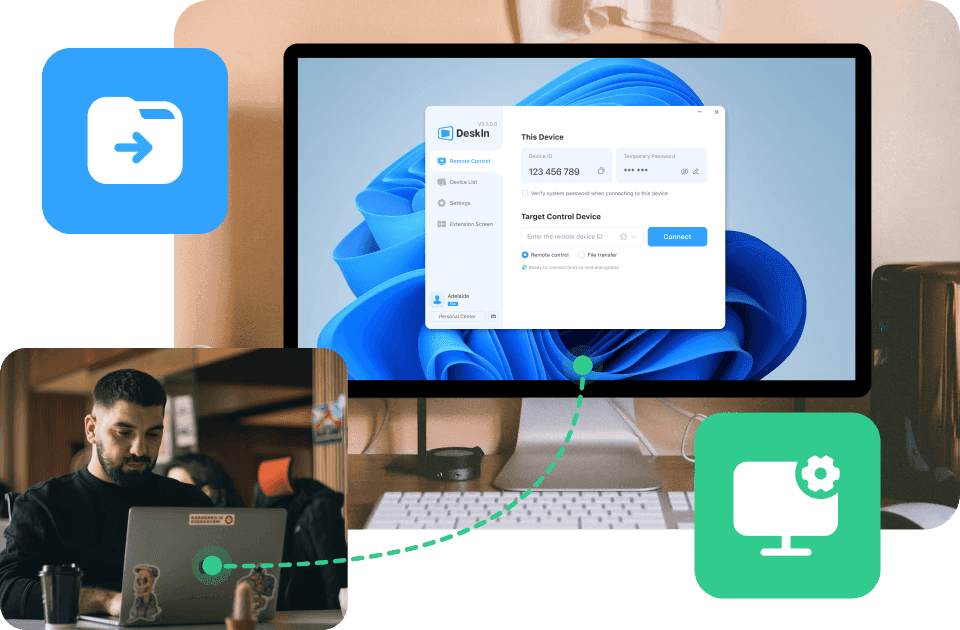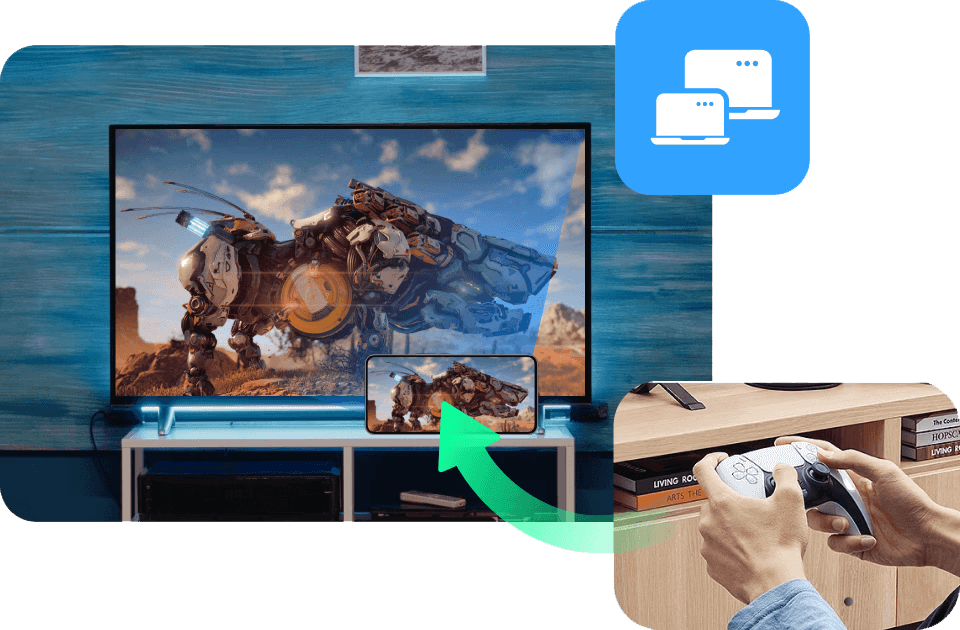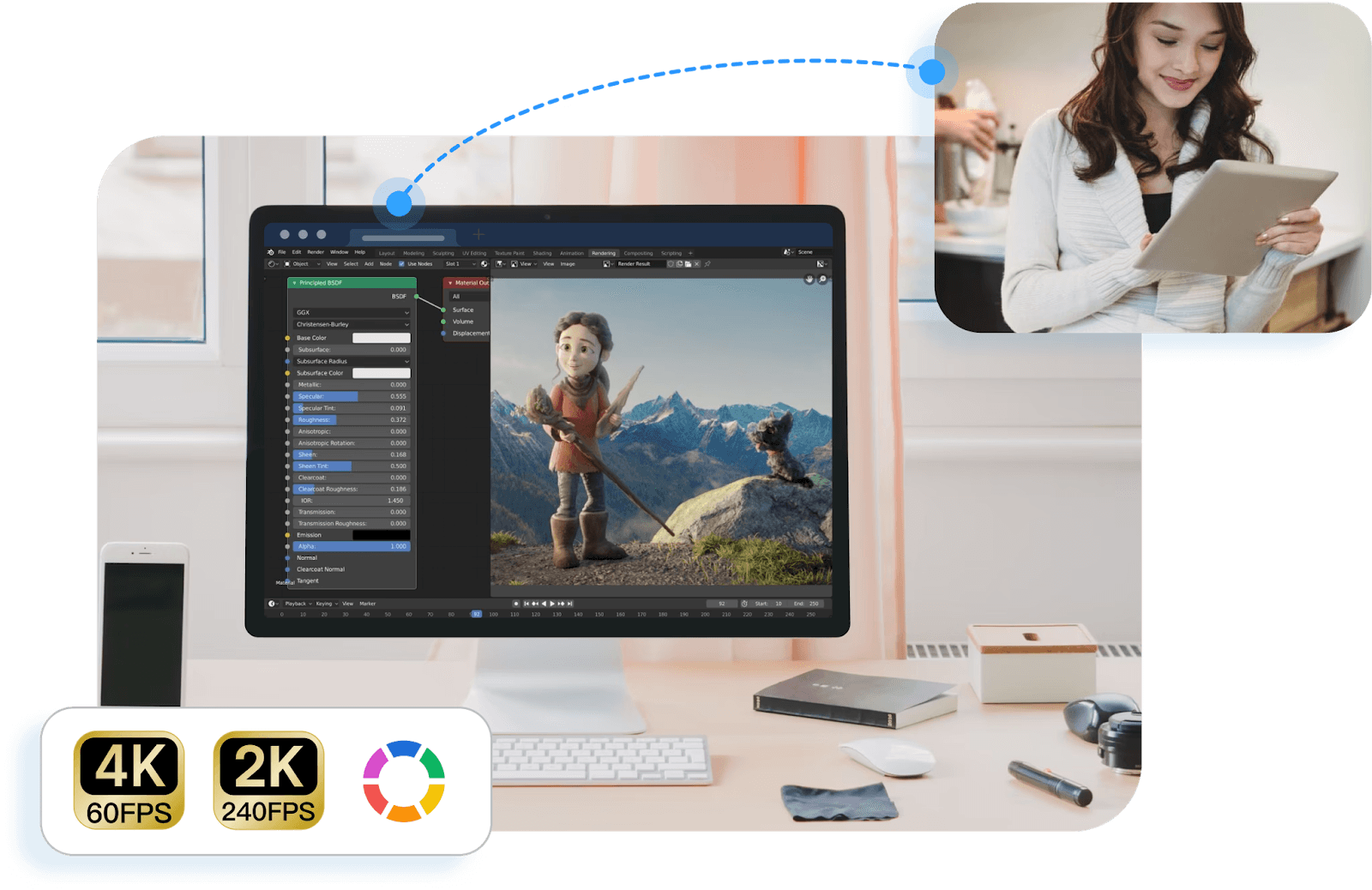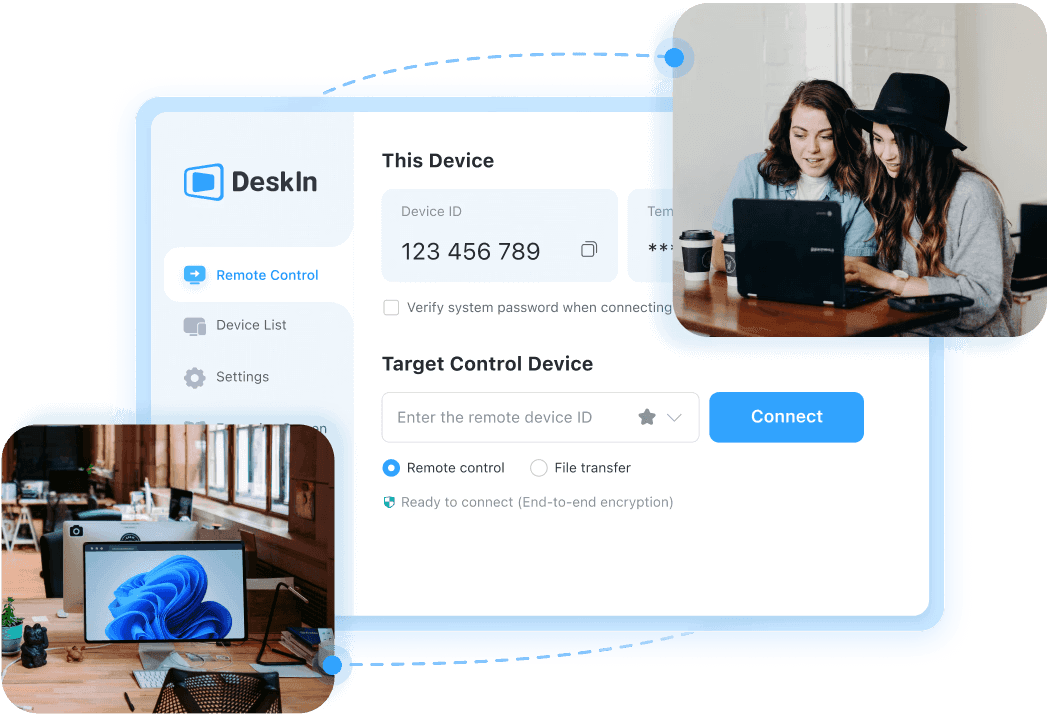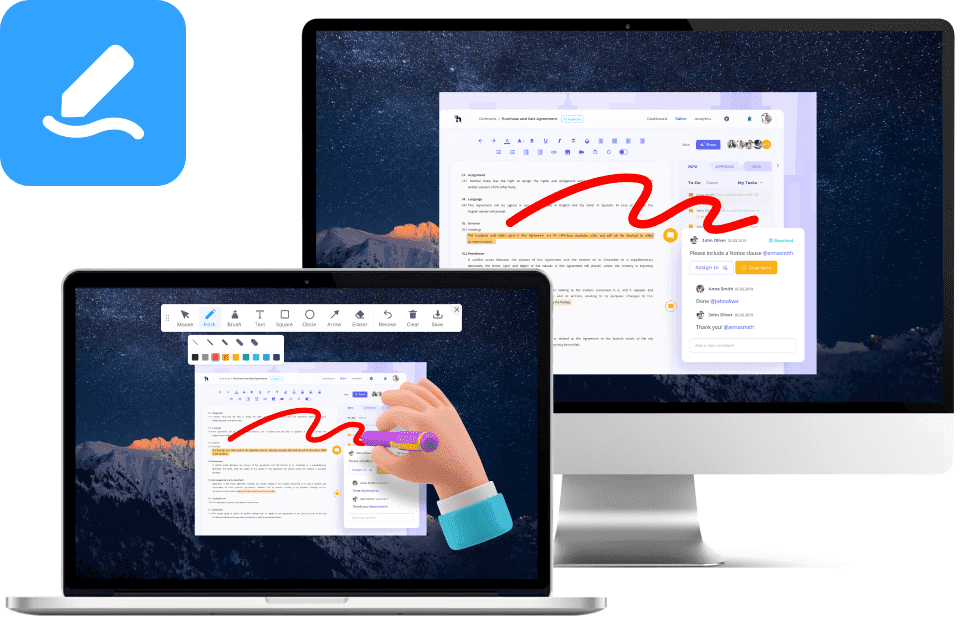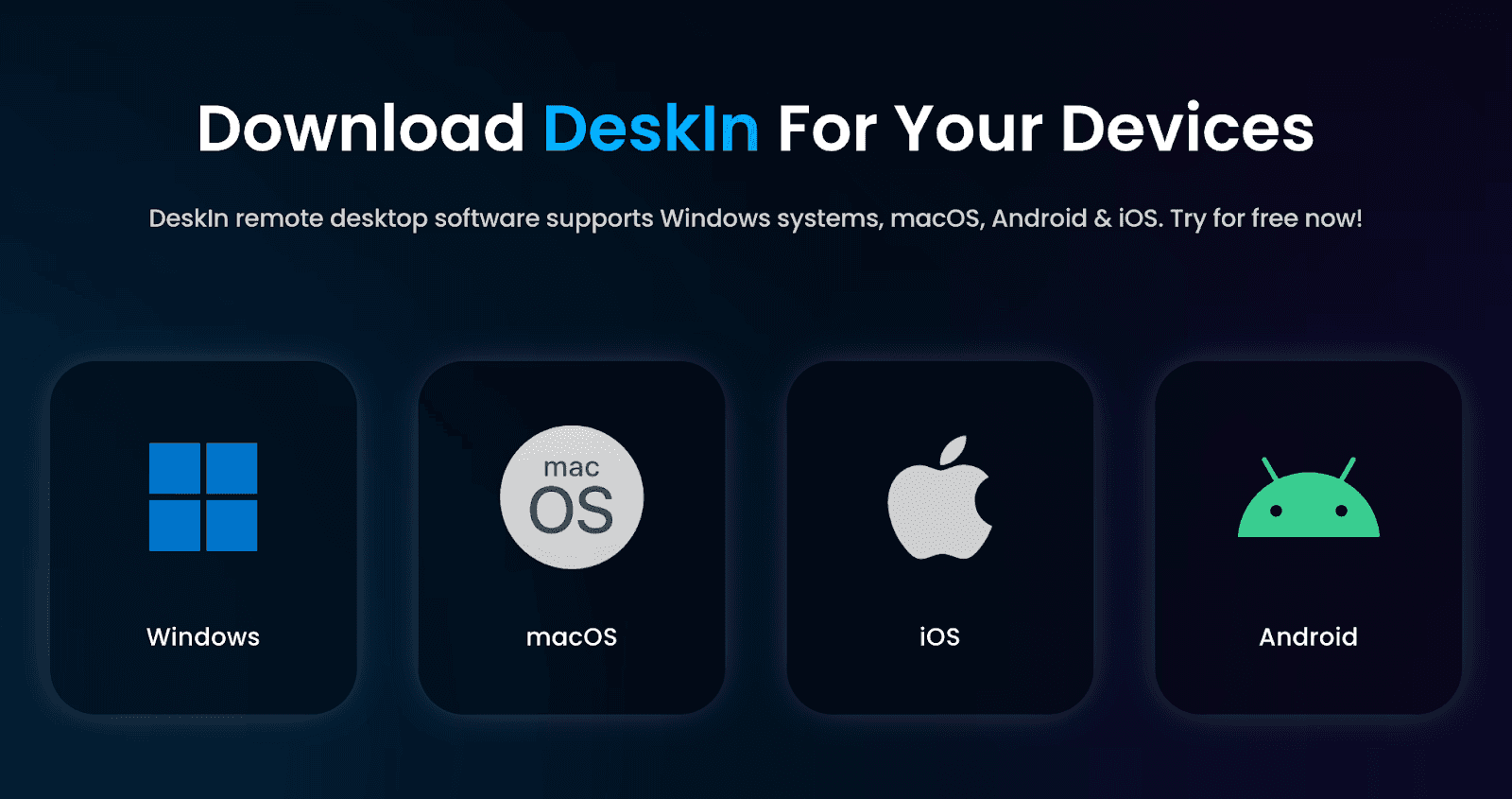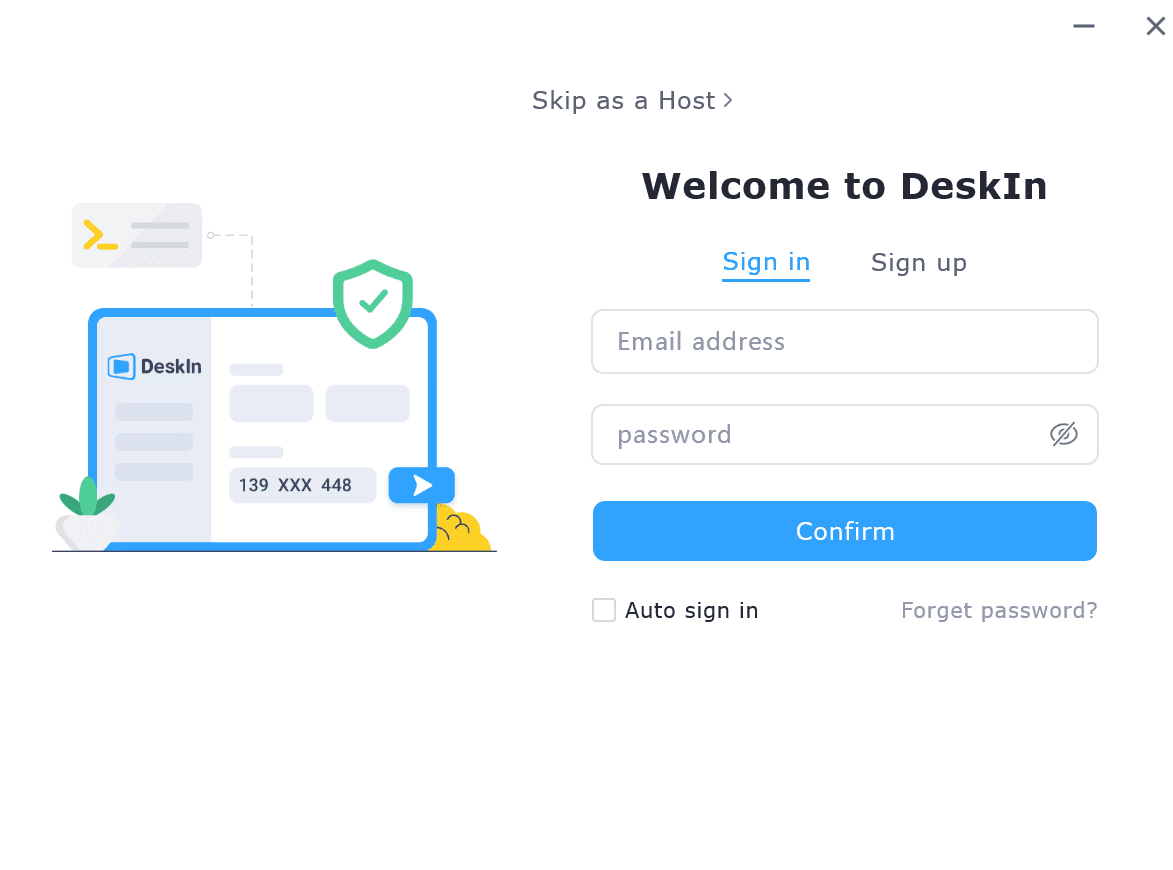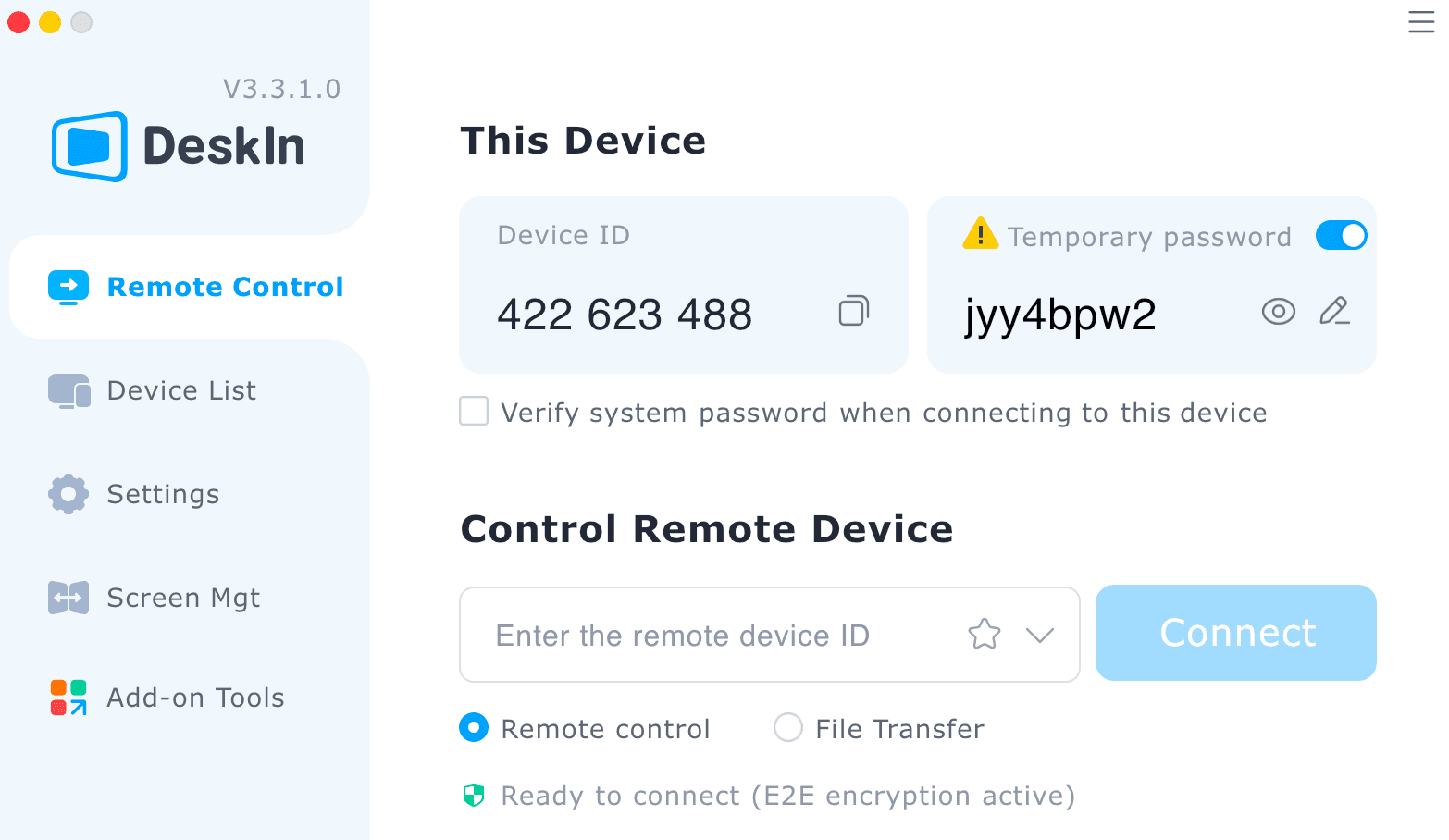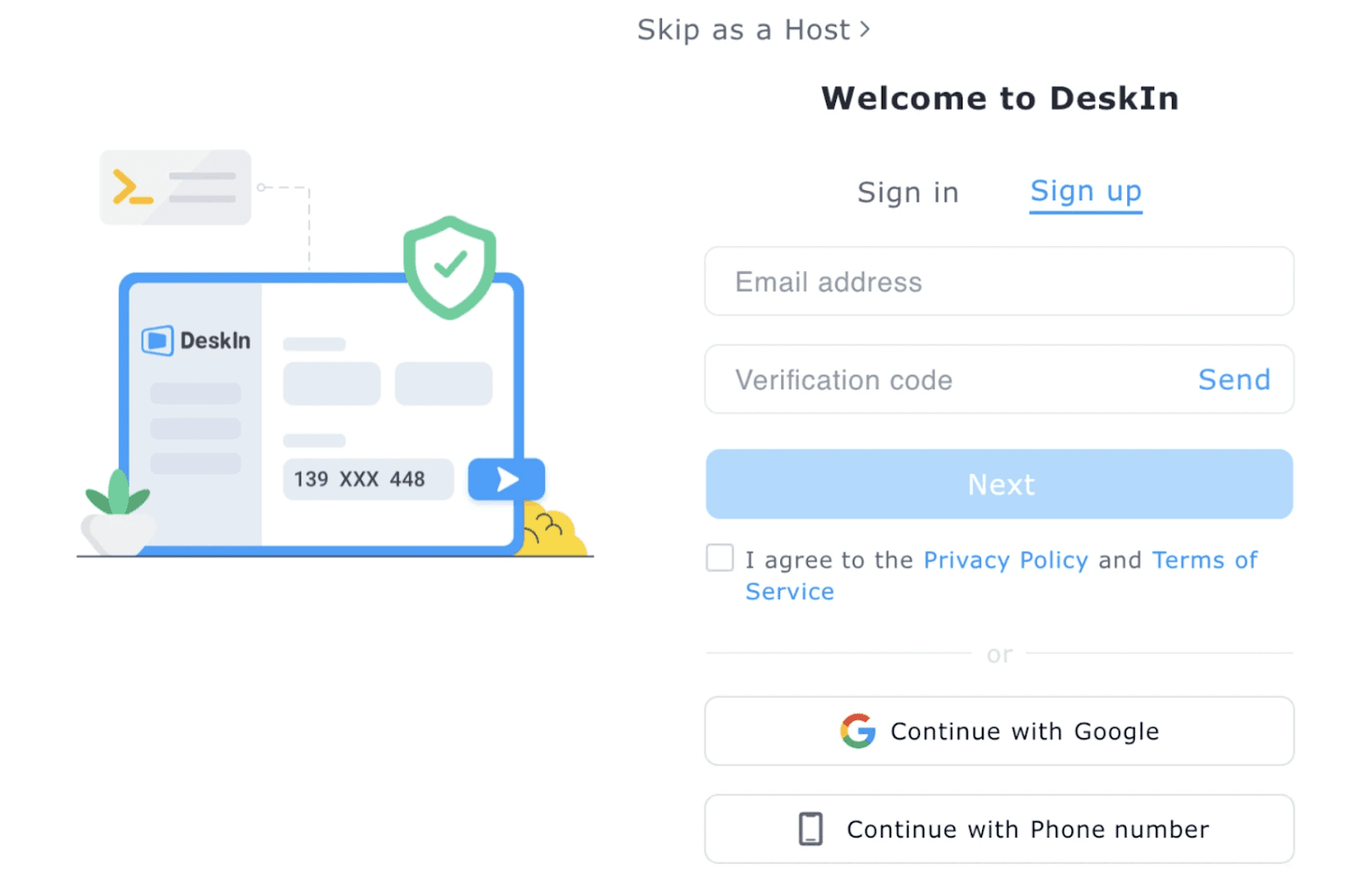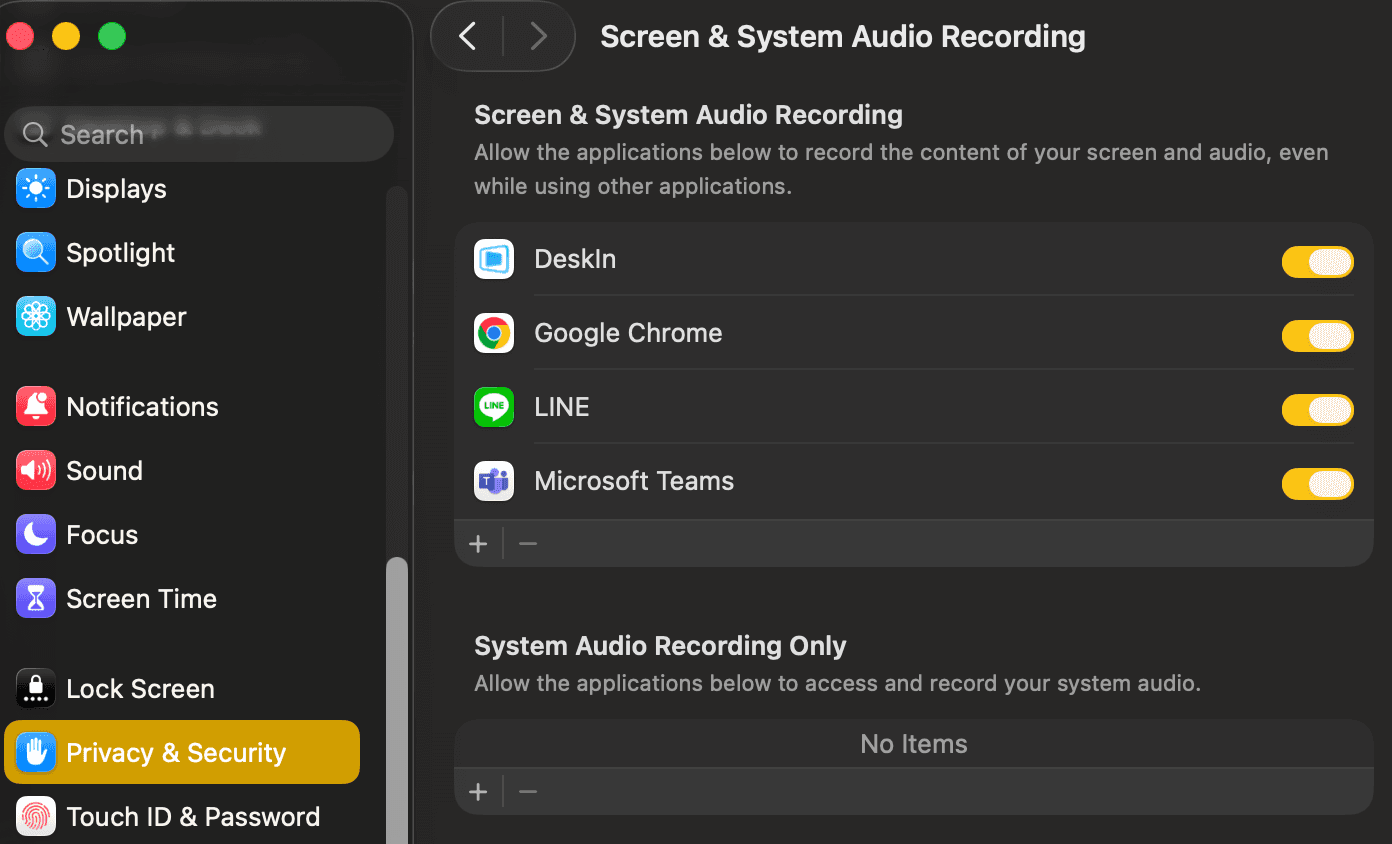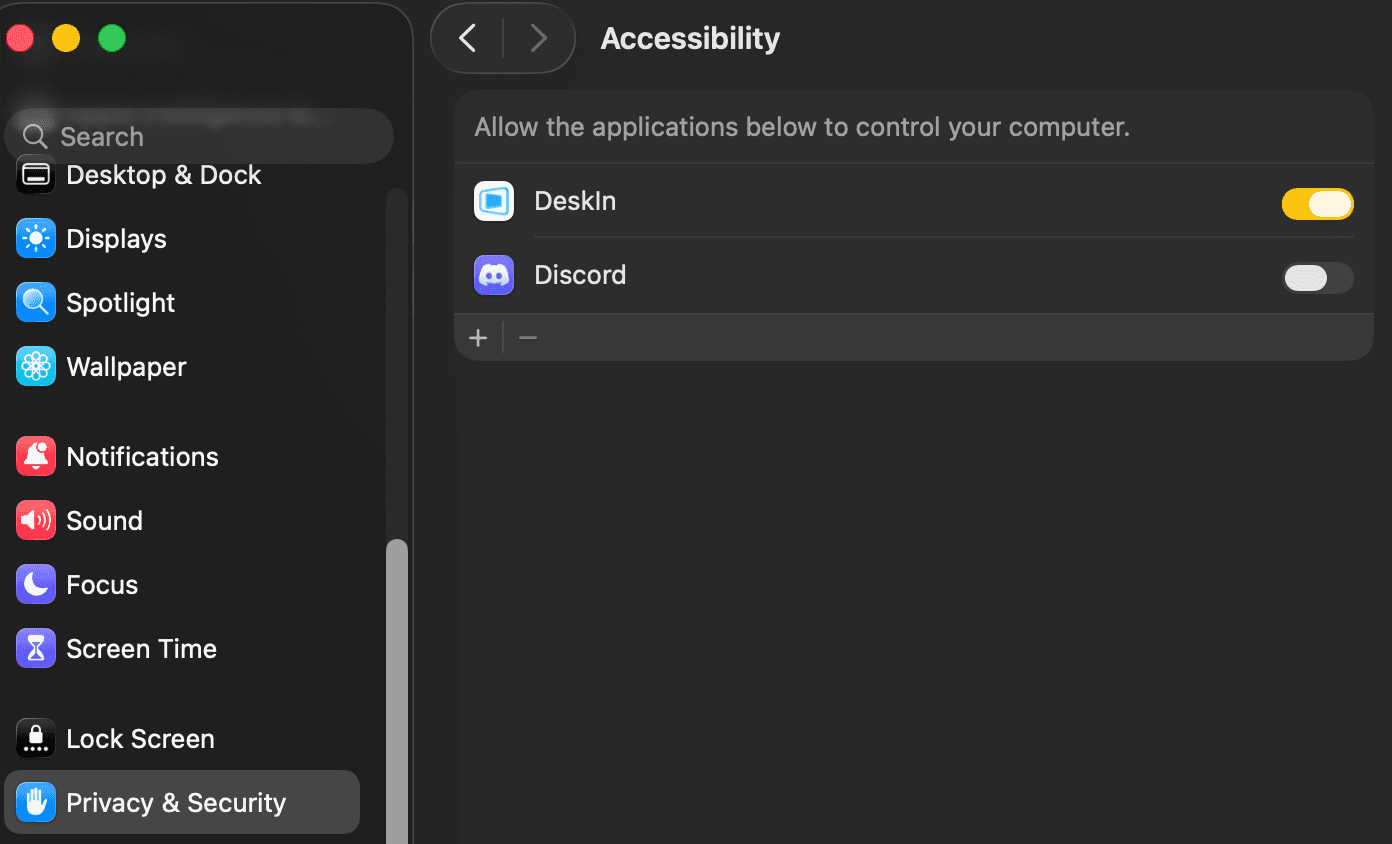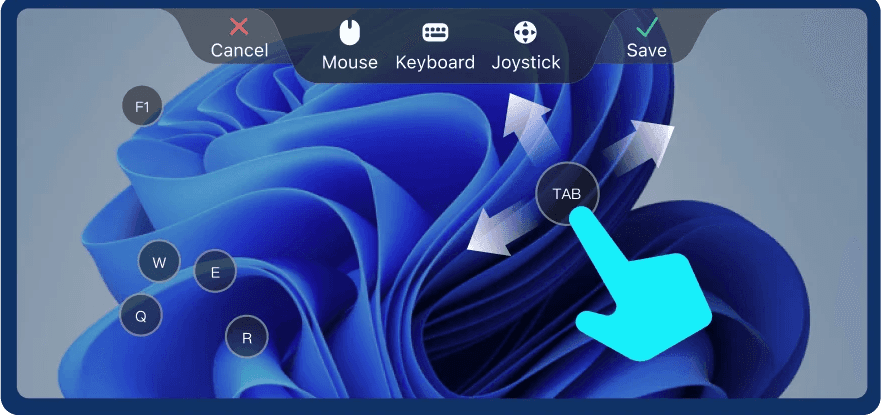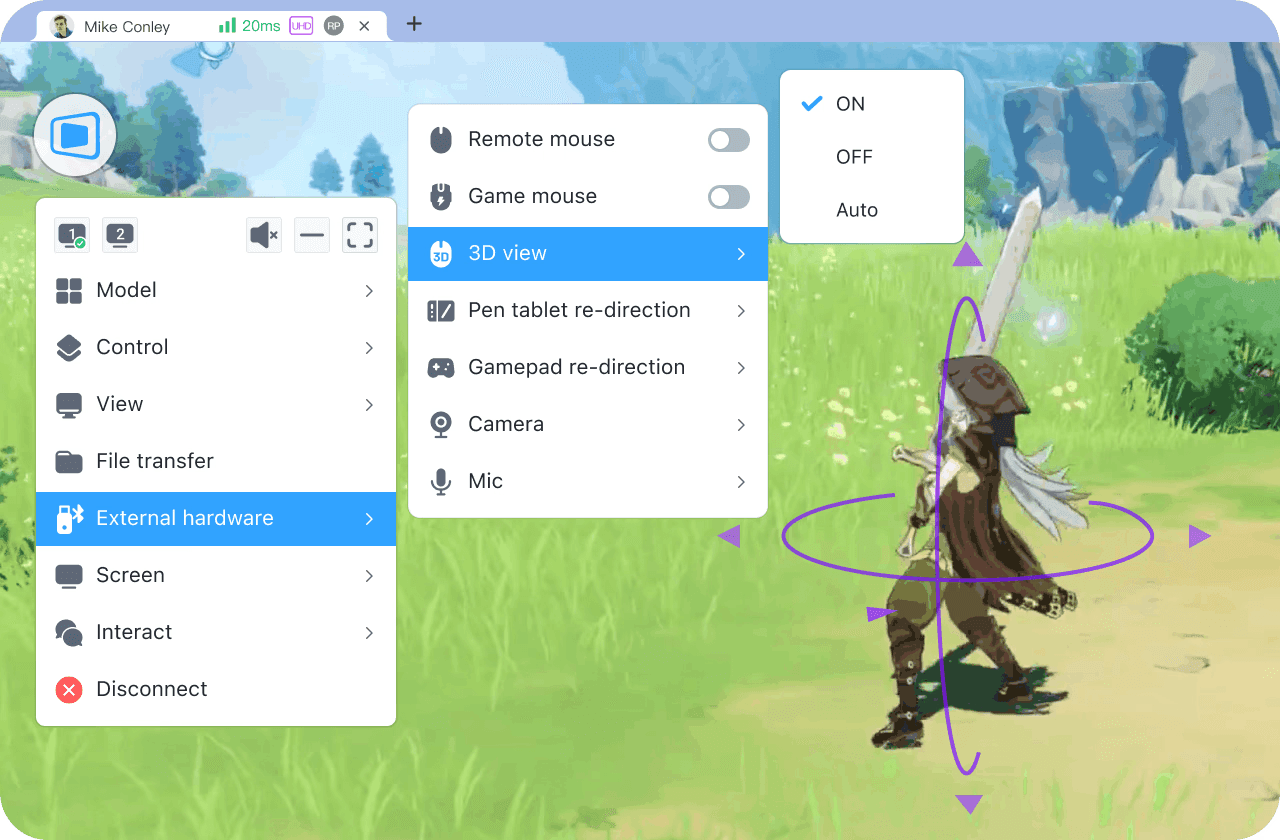In today’s business environment, many small startup teams face similar communication challenges. A team composed of hardware engineers, business developers, and operations managers often struggles with the inefficiency of endless email threads, wasting time digging through cluttered inboxes trying to find “that one file someone sent ages ago.” They urgently need a unified team app that integrates different work styles and ends the chaos once and for all.
With that in mind, this article explores how to choose the right collaboration tool for cross-functional teams. We’ll first explain the core value of collaboration tools, then review six standout platforms in detail to help teams like yours find the most suitable solution and boost overall collaboration efficiency.
Further reading:
What Is a Collaboration Platform and Why It Matters
A collaboration platform is an online workspace that allows team members to work together, communicate, and manage projects in one place. Its greatest strength lies in breaking down departmental and geographic barriers—everyone can co-edit the same document in real time, eliminating the chaos of exchanging multiple file versions. This not only ensures information accuracy and timeliness but also reduces communication costs and improves execution efficiency across the team.
Real-time collaboration with unified versions: Team members can co-edit a document and view version histories anytime. For instance, when a marketing team drafts a campaign proposal, everyone can edit and comment simultaneously, while the system auto-saves every version—no more “final-version-v2” confusion.
Improved communication efficiency: Discussions can happen directly in the document or task card, keeping all context and files together. For example, when an engineer reports a bug in the project management tool, the product manager and designer can reply and attach fixes right within the thread—no more switching between chat apps and email.
Visualized progress and clear accountability: Tools like Kanban boards and Gantt charts make each task’s owner and progress status visible at a glance. Project managers can quickly see which tasks are “in progress,” “completed,” or “blocked.”
Centralized knowledge and file management: All important documents and meeting notes are stored in the cloud, easy for new or existing members to access anytime. For example, a new hire can instantly find past project reports or SOPs without asking around—shortening their onboarding time.
Who Should Use a Collaboration Platform
After understanding its benefits, the next step is to examine your team’s needs. Not every team requires the same tool. So, who are collaboration platforms best suited for?
Remote or distributed teams: Members spread across different cities or countries can use real-time chat, video meetings, and shared cloud drives to stay synchronized and ensure smooth information flow.
Project-oriented teams: Teams needing clear task assignments, progress tracking, and centralized file management—for example, software developers using Kanban boards, or marketing teams executing large-scale campaigns.
Creative and design teams: Those who frequently review and provide feedback on design drafts or scripts can annotate visually and manage versions easily—avoiding confusion over which file is latest.
Cross-department teams: When product development involves input from tech, business, and marketing departments, shared discussions and co-editing streamline communication and reduce meeting time.
6 Best Collaboration Platforms Worth Trying
There are countless collaboration tools on the market, but not all fit the pace of real-world teamwork. To help you avoid decision fatigue, we’ve curated six reliable, integration-friendly, and productivity-boosting tools that can truly empower your workflow. Let’s explore which ones can become your next workplace essential.
1. DeskIn (Top Recommendation)

Among online collaboration solutions, DeskIn stands out with its stable and smooth remote desktop technology that forms a solid foundation for team collaboration. It not only lets members securely access office computers anytime, anywhere, but also elevates remote access into a full collaborative workspace—making teamwork seamless no matter where members are.
📥 Want to try it out? DeskIn offers a free version with enterprise-grade encryption—safe and easy to use!

DeskIn Highlights:
Rich collaboration features: Beyond remote access, DeskIn offers extended screen, screen mirroring, voice chat, on-screen annotation, and shared clipboard for fast, interactive teamwork.
Cross-system file transfer: Transfer unlimited file sizes, types, and quantities between systems at speeds up to 12MB/s.
Stable, high-quality connection: With 200+ global nodes, DeskIn ensures smooth, reliable connections and ultra-low downtime—even for long working sessions.
Strong compatibility: Seamless remote access across Windows, macOS, iOS, and Android.
4K Ultra HD & Low Latency: Supports up to 4K 60FPS image quality with latency under 40ms.
2. Google Sites

Google Sites is a wiki-based web-building system designed for teamwork. Members can easily share and access key information in one place—no coding required. Its drag-and-drop interface, deep integration with Google Workspace (Drive, Calendar, etc.), and flexible permission settings make it ideal for creating internal project hubs, team sites, or even public-facing pages.
3. Google Drive (Cloud Collaboration Platform)
Google Drive is the cornerstone of team file storage and collaboration. Members can co-edit documents, spreadsheets, and slides in real time, with all changes automatically saved. Version control is built in, and access permissions can be precisely set for both internal and external sharing. From cross-department content creation to campaign planning or education materials, Google Drive keeps collaboration streamlined and organized.
4. Lark
Lark (Feishu) is an all-in-one intelligent communication platform that combines instant messaging, video meetings, cloud documents, and task management in one place. It enables teams to handle communication, document editing, and task tracking within a single app—ideal for remote or cross-department teams seeking faster information flow and integrated workflows.
5. Trello
Trello is an intuitive visual project management tool based on “boards, lists, and cards.” It helps teams easily track progress, assign tasks, and collaborate visually. Its simple drag-and-drop system makes work status transparent and supports real-time updates and comments. Perfect for project teams, remote workers, and workflow management (e.g., CRM, event planning).
6. Figma

Figma is a cloud-based UI/UX design tool centered on real-time collaboration. Designers, product managers, and developers can co-edit the same design file simultaneously. This eliminates back-and-forth file sharing and accelerates design-to-delivery efficiency. With its intuitive interface and powerful prototyping features, Figma is ideal for product development and visual collaboration in remote teams.
Conclusion
Ultimately, the true value of a collaboration platform lies in centralizing and visualizing team workflows. Real-time co-editing drastically reduces communication costs and version chaos. Whether dealing with documents, design files, or project tasks, the tools above allow real-time sync and collaboration.
When choosing a platform, focus on your team’s primary workflows and pain points—that’s the key to selecting the most suitable solution and unlocking your team’s productivity.
📥 Click here to try DeskIn—our top recommended collaboration platform.

Common Q&A About Collaboration Platforms
Which open-source collaboration platforms are worth trying?
Redmine and Taiga are two strong candidates. Redmine is highly flexible and customizable—great for development teams—while Taiga is designed for agile workflows with a clean and intuitive interface.
Which collaboration software is the best?
There’s no universal “best” software—the key is matching your team’s needs. For teams requiring extensive remote operations and real-time collaboration, a stable, feature-rich, cross-platform tool like DeskIn is an excellent choice.
Is there a secure, private online collaboration tool like Excel?
Yes. Proton Drive’s document tools use end-to-end encryption to ensure that only you and your collaborators can access your data, while still supporting real-time co-editing—balancing privacy and teamwork perfectly.
In today’s business environment, many small startup teams face similar communication challenges. A team composed of hardware engineers, business developers, and operations managers often struggles with the inefficiency of endless email threads, wasting time digging through cluttered inboxes trying to find “that one file someone sent ages ago.” They urgently need a unified team app that integrates different work styles and ends the chaos once and for all.
With that in mind, this article explores how to choose the right collaboration tool for cross-functional teams. We’ll first explain the core value of collaboration tools, then review six standout platforms in detail to help teams like yours find the most suitable solution and boost overall collaboration efficiency.
Further reading:
What Is a Collaboration Platform and Why It Matters
A collaboration platform is an online workspace that allows team members to work together, communicate, and manage projects in one place. Its greatest strength lies in breaking down departmental and geographic barriers—everyone can co-edit the same document in real time, eliminating the chaos of exchanging multiple file versions. This not only ensures information accuracy and timeliness but also reduces communication costs and improves execution efficiency across the team.
Real-time collaboration with unified versions: Team members can co-edit a document and view version histories anytime. For instance, when a marketing team drafts a campaign proposal, everyone can edit and comment simultaneously, while the system auto-saves every version—no more “final-version-v2” confusion.
Improved communication efficiency: Discussions can happen directly in the document or task card, keeping all context and files together. For example, when an engineer reports a bug in the project management tool, the product manager and designer can reply and attach fixes right within the thread—no more switching between chat apps and email.
Visualized progress and clear accountability: Tools like Kanban boards and Gantt charts make each task’s owner and progress status visible at a glance. Project managers can quickly see which tasks are “in progress,” “completed,” or “blocked.”
Centralized knowledge and file management: All important documents and meeting notes are stored in the cloud, easy for new or existing members to access anytime. For example, a new hire can instantly find past project reports or SOPs without asking around—shortening their onboarding time.
Who Should Use a Collaboration Platform
After understanding its benefits, the next step is to examine your team’s needs. Not every team requires the same tool. So, who are collaboration platforms best suited for?
Remote or distributed teams: Members spread across different cities or countries can use real-time chat, video meetings, and shared cloud drives to stay synchronized and ensure smooth information flow.
Project-oriented teams: Teams needing clear task assignments, progress tracking, and centralized file management—for example, software developers using Kanban boards, or marketing teams executing large-scale campaigns.
Creative and design teams: Those who frequently review and provide feedback on design drafts or scripts can annotate visually and manage versions easily—avoiding confusion over which file is latest.
Cross-department teams: When product development involves input from tech, business, and marketing departments, shared discussions and co-editing streamline communication and reduce meeting time.
6 Best Collaboration Platforms Worth Trying
There are countless collaboration tools on the market, but not all fit the pace of real-world teamwork. To help you avoid decision fatigue, we’ve curated six reliable, integration-friendly, and productivity-boosting tools that can truly empower your workflow. Let’s explore which ones can become your next workplace essential.
1. DeskIn (Top Recommendation)

Among online collaboration solutions, DeskIn stands out with its stable and smooth remote desktop technology that forms a solid foundation for team collaboration. It not only lets members securely access office computers anytime, anywhere, but also elevates remote access into a full collaborative workspace—making teamwork seamless no matter where members are.
📥 Want to try it out? DeskIn offers a free version with enterprise-grade encryption—safe and easy to use!

DeskIn Highlights:
Rich collaboration features: Beyond remote access, DeskIn offers extended screen, screen mirroring, voice chat, on-screen annotation, and shared clipboard for fast, interactive teamwork.
Cross-system file transfer: Transfer unlimited file sizes, types, and quantities between systems at speeds up to 12MB/s.
Stable, high-quality connection: With 200+ global nodes, DeskIn ensures smooth, reliable connections and ultra-low downtime—even for long working sessions.
Strong compatibility: Seamless remote access across Windows, macOS, iOS, and Android.
4K Ultra HD & Low Latency: Supports up to 4K 60FPS image quality with latency under 40ms.
2. Google Sites

Google Sites is a wiki-based web-building system designed for teamwork. Members can easily share and access key information in one place—no coding required. Its drag-and-drop interface, deep integration with Google Workspace (Drive, Calendar, etc.), and flexible permission settings make it ideal for creating internal project hubs, team sites, or even public-facing pages.
3. Google Drive (Cloud Collaboration Platform)
Google Drive is the cornerstone of team file storage and collaboration. Members can co-edit documents, spreadsheets, and slides in real time, with all changes automatically saved. Version control is built in, and access permissions can be precisely set for both internal and external sharing. From cross-department content creation to campaign planning or education materials, Google Drive keeps collaboration streamlined and organized.
4. Lark
Lark (Feishu) is an all-in-one intelligent communication platform that combines instant messaging, video meetings, cloud documents, and task management in one place. It enables teams to handle communication, document editing, and task tracking within a single app—ideal for remote or cross-department teams seeking faster information flow and integrated workflows.
5. Trello
Trello is an intuitive visual project management tool based on “boards, lists, and cards.” It helps teams easily track progress, assign tasks, and collaborate visually. Its simple drag-and-drop system makes work status transparent and supports real-time updates and comments. Perfect for project teams, remote workers, and workflow management (e.g., CRM, event planning).
6. Figma

Figma is a cloud-based UI/UX design tool centered on real-time collaboration. Designers, product managers, and developers can co-edit the same design file simultaneously. This eliminates back-and-forth file sharing and accelerates design-to-delivery efficiency. With its intuitive interface and powerful prototyping features, Figma is ideal for product development and visual collaboration in remote teams.
Conclusion
Ultimately, the true value of a collaboration platform lies in centralizing and visualizing team workflows. Real-time co-editing drastically reduces communication costs and version chaos. Whether dealing with documents, design files, or project tasks, the tools above allow real-time sync and collaboration.
When choosing a platform, focus on your team’s primary workflows and pain points—that’s the key to selecting the most suitable solution and unlocking your team’s productivity.
📥 Click here to try DeskIn—our top recommended collaboration platform.

Common Q&A About Collaboration Platforms
Which open-source collaboration platforms are worth trying?
Redmine and Taiga are two strong candidates. Redmine is highly flexible and customizable—great for development teams—while Taiga is designed for agile workflows with a clean and intuitive interface.
Which collaboration software is the best?
There’s no universal “best” software—the key is matching your team’s needs. For teams requiring extensive remote operations and real-time collaboration, a stable, feature-rich, cross-platform tool like DeskIn is an excellent choice.
Is there a secure, private online collaboration tool like Excel?
Yes. Proton Drive’s document tools use end-to-end encryption to ensure that only you and your collaborators can access your data, while still supporting real-time co-editing—balancing privacy and teamwork perfectly.





